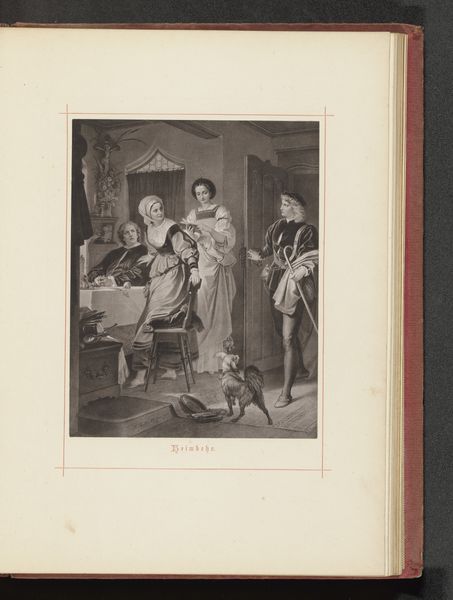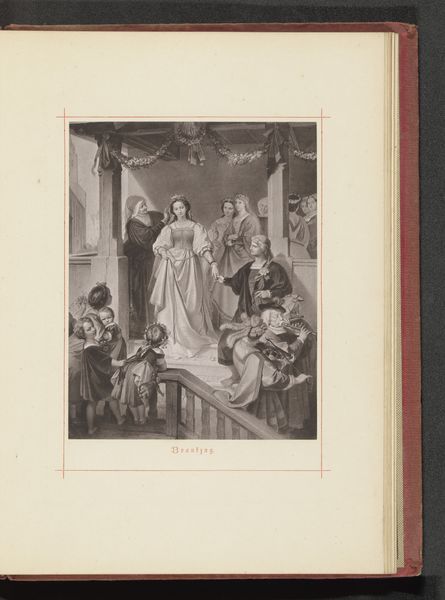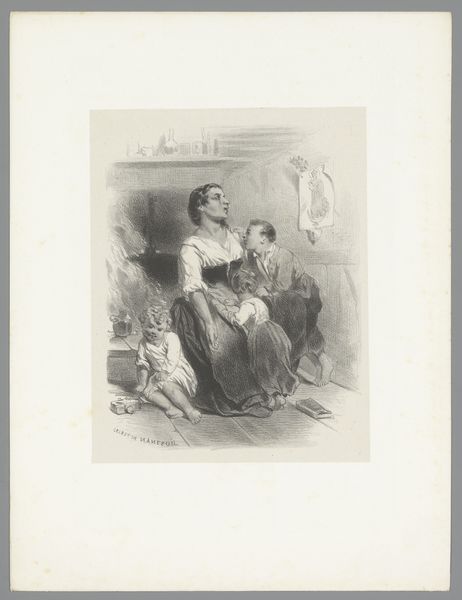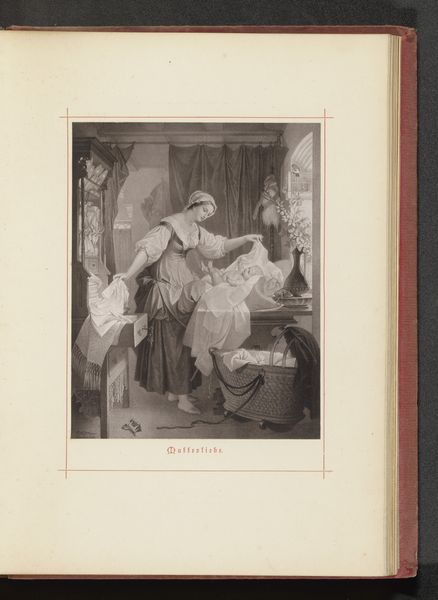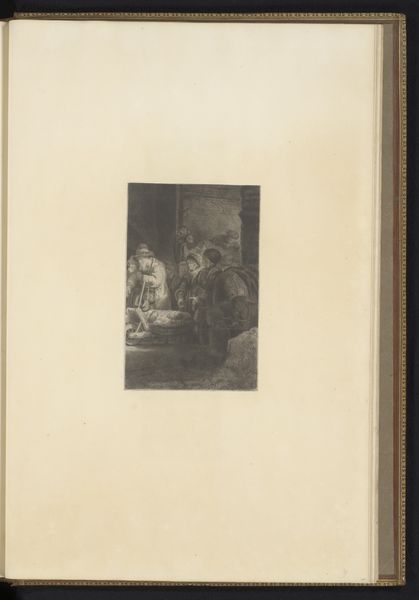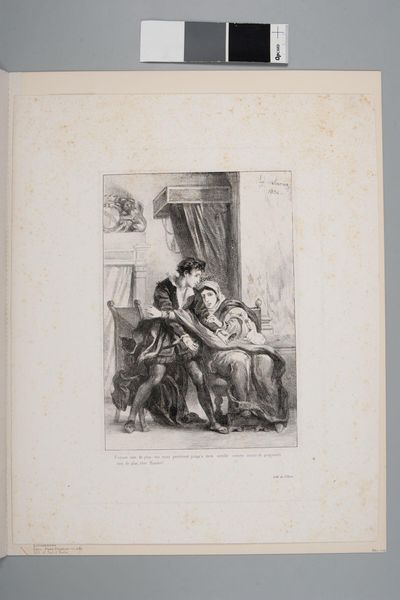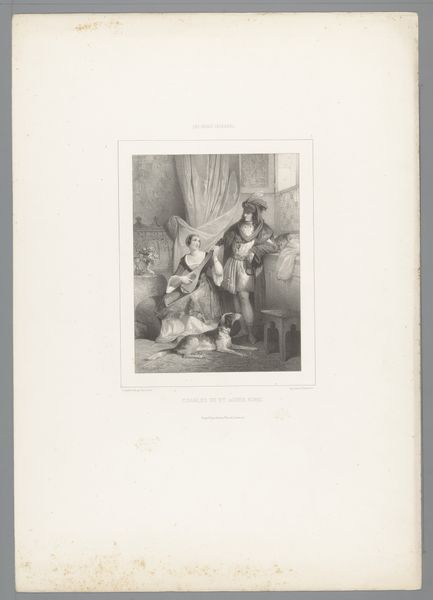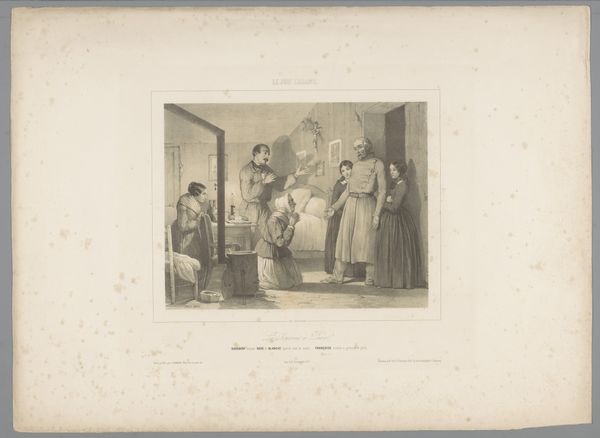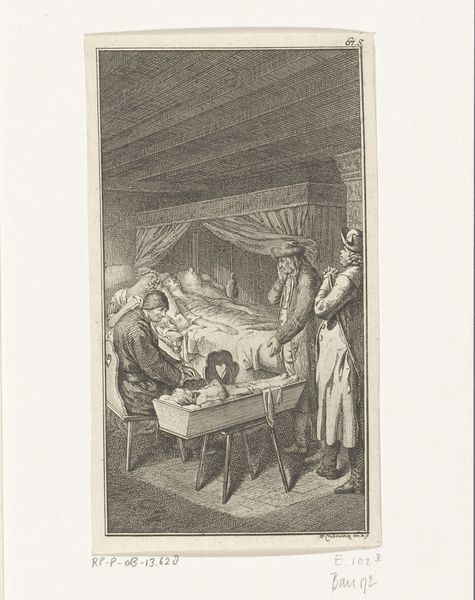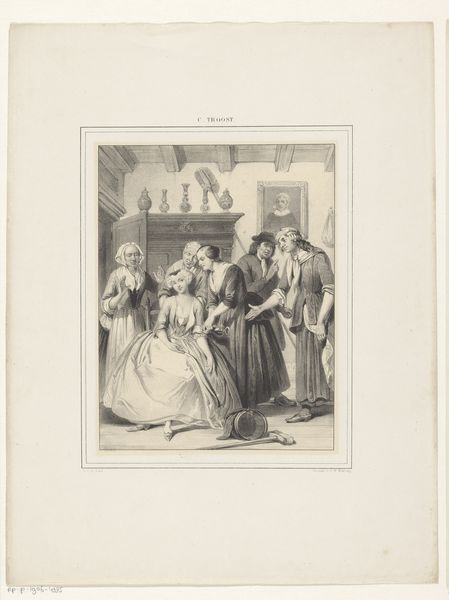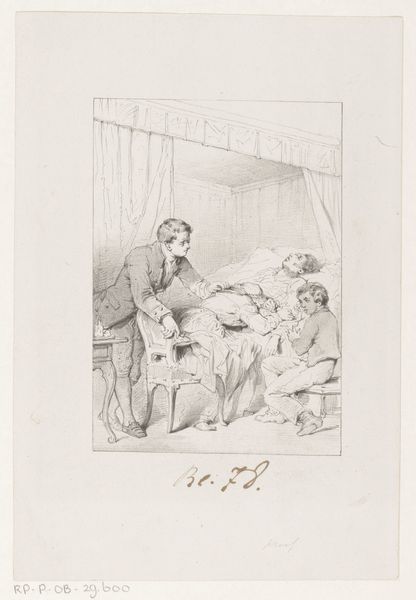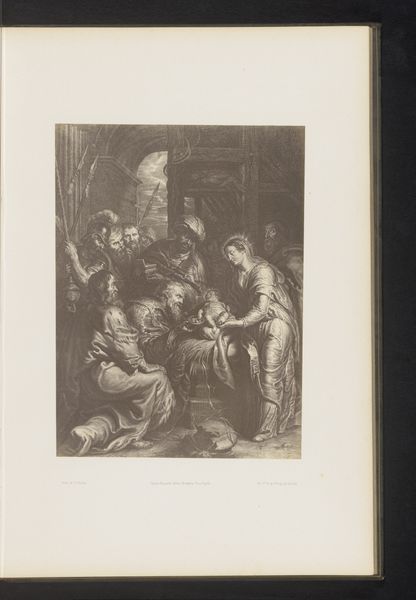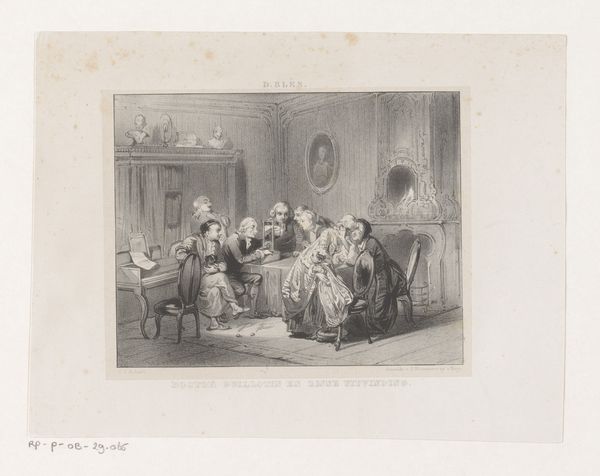
Fotoreproductie van een tekening van een vrouw met zes kinderen in een kamer c. 1871 - 1881
0:00
0:00
drawing, print, pencil
#
portrait
#
drawing
# print
#
group-portraits
#
pencil
#
genre-painting
#
realism
Dimensions: height 173 mm, width 135 mm
Copyright: Rijks Museum: Open Domain
Curator: Let's spend a moment looking at this reproduced drawing from the late 19th century of a woman surrounded by her six children. The piece, whose creator is anonymous, is rendered in pencil and print, focusing on an interior domestic scene. Editor: Wow, it's intense! So much contained chaos in that one little room. I’m immediately struck by the way the woman holds herself so upright and collected amidst all of her children's frenetic activity. It's almost a little bit eerie, like she's playing a role. Curator: It is fascinating to consider that prints like these would have circulated widely, possibly as illustrations in books or periodicals. This form of image distribution allows us to consider a new perspective of genre and family, reaching a diverse viewing public through the very act of production. Editor: The children are great—a mix of performing domesticity, studying at their miniature desk and doll-like posing, as if frozen by her look. This hints at themes related to domestic labour and gender roles that women were assigned back then, or maybe how she is performing these ideas within the artwork itself. It raises questions in my mind around domestic work and its visibility...or lack thereof! Curator: Precisely! Also, how did the act of reproduction via pencil drawing, print and distribution impact understandings and perceptions? And more significantly, what choices led to the decision to frame it so formally as a reproduction instead of celebrating drawing as "art" as we think about it today? I mean, this reproduction is also beautiful in and of itself—so there must be reasons about how and what the publishers and markets prioritized that matter here, and which get overlooked. Editor: You know, even down to the title, “Der Mutter Walten”... something feels removed from everyday experience. What sort of value judgments did editors and distributors emphasize at the time, through images and stories such as this one? It could all change how we understand the role of motherhood and how this image engages with ideas about class. It would really bring it back to a material reality, if we understand those value chains, you know? Curator: Absolutely! I agree, this exploration into the process by which everyday people gained access to images expands our awareness of their role in culture, the same way we can think of today’s social media. I am reminded too about labor in general! How, too, are drawings made, published, consumed through all of its many versions? So much to consider and unpack! Editor: Absolutely. There's a powerful, quiet rebellion in the rendering of that ordinary room of the home, full of stuff to make. It encourages me to keep looking around our rooms, asking the who, what, and how!
Comments
No comments
Be the first to comment and join the conversation on the ultimate creative platform.
